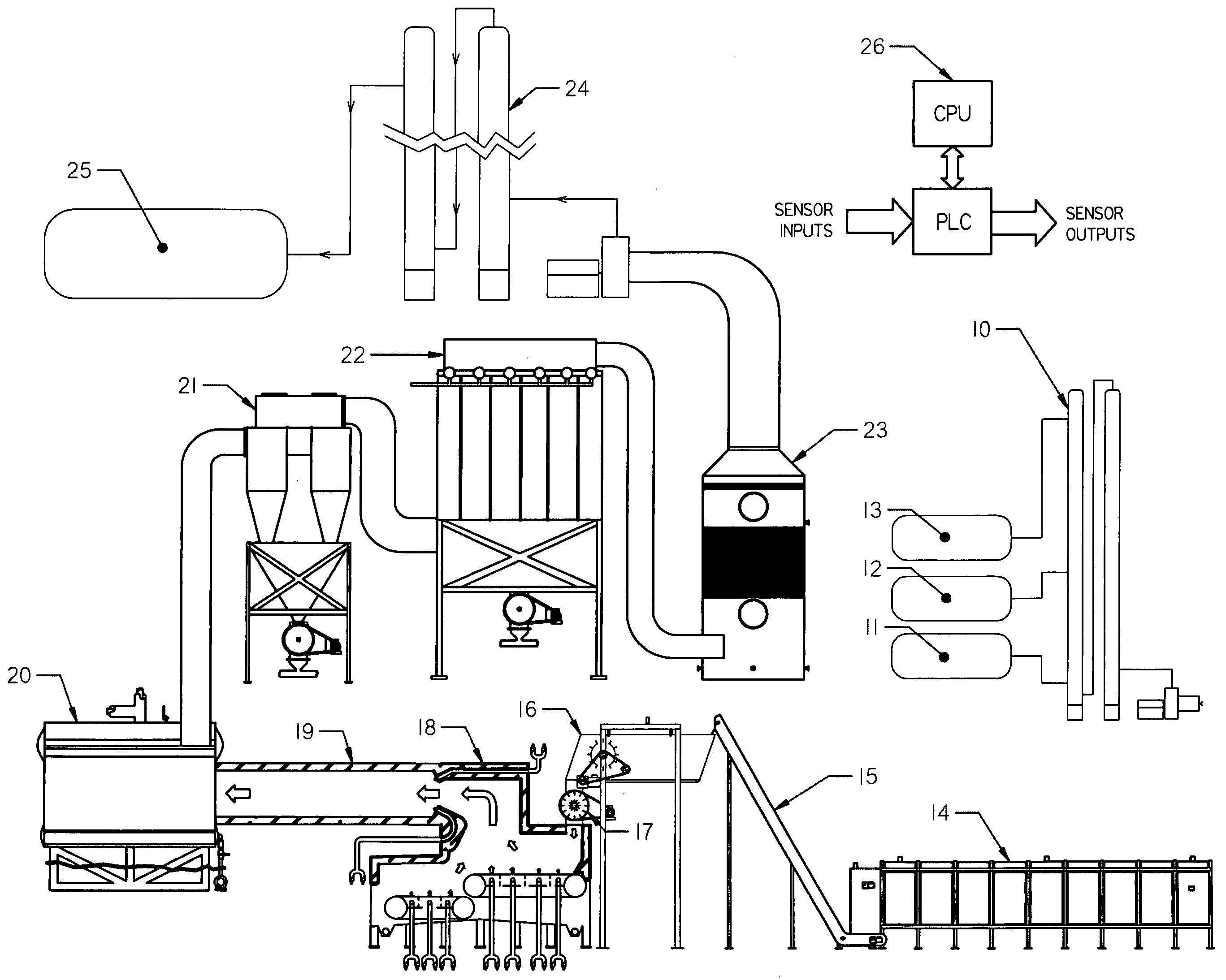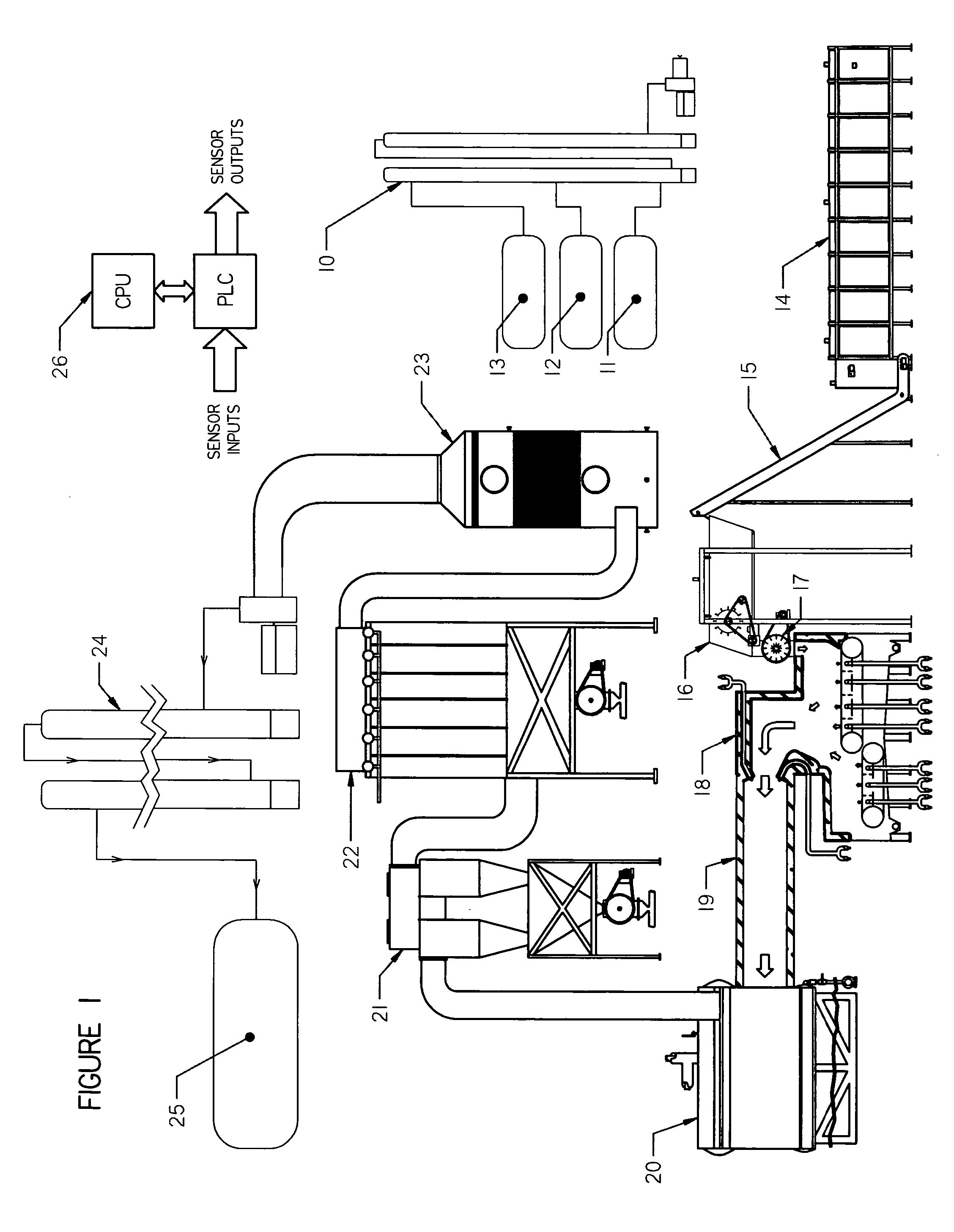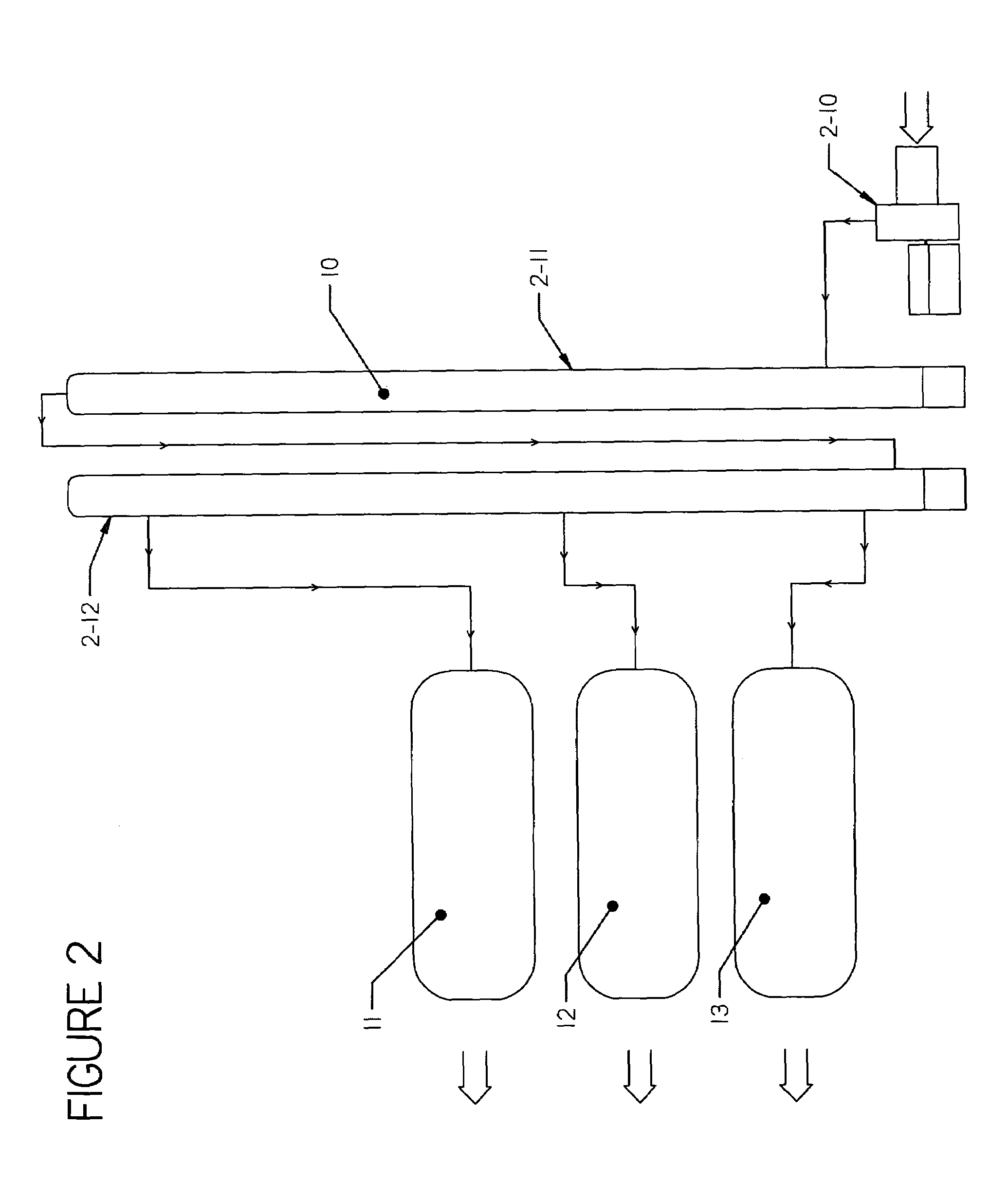Oxygen-based biomass combustion system and method
a biomass combustion and oxygen-based technology, applied in the direction of solid fuel combustion, combustion types, lighting and heating apparatuses, etc., can solve the problems of reducing the quantity of carbon monoxide and vocs produced, the energy required to move gas in the combustor and ancillary, etc., and achieving the effect of minimizing the heat loss of heating unnecessary vocs
- Summary
- Abstract
- Description
- Claims
- Application Information
AI Technical Summary
Benefits of technology
Problems solved by technology
Method used
Image
Examples
Embodiment Construction
[0026]Referring now to FIG. 1, the gasifier system comprises an air separator unit 10, gas storage for oxygen 11, nitrogen 12, argon 13, a solid fuel storage unit 14 and fuel transport conveyor 15, inlet feed conveyor 16 and fuel metering unit 17, a gasifier 18, a gasifier firetube with connection to boiler 19, the boiler itself 20, a cyclone 21, baghouse 22, acid gas scrubber 23, carbon dioxide scrubber 24, carbon dioxide storage system 25, and control system 26 which is diagrammatically illustrated in FIGS. 9A, 9B and 9C.
Air Separator Unit 10 (FIG. 2)
[0027]The air separator unit 10 separates air into its components parts; oxygen, nitrogen and argon. Trace gases normally present in air are vented. Gaseous air is compressed by a turbine compressor 2-10 and passes into condensing column 2-11 where the compressed gases are cooled and condensed into liquids. The liquids then pass into a fractionating tower 2-12 where they are heated and separated by their boiling points. The separated,...
PUM
| Property | Measurement | Unit |
|---|---|---|
| combustion temperature | aaaaa | aaaaa |
| usable heat energy | aaaaa | aaaaa |
| length | aaaaa | aaaaa |
Abstract
Description
Claims
Application Information
 Login to View More
Login to View More - R&D
- Intellectual Property
- Life Sciences
- Materials
- Tech Scout
- Unparalleled Data Quality
- Higher Quality Content
- 60% Fewer Hallucinations
Browse by: Latest US Patents, China's latest patents, Technical Efficacy Thesaurus, Application Domain, Technology Topic, Popular Technical Reports.
© 2025 PatSnap. All rights reserved.Legal|Privacy policy|Modern Slavery Act Transparency Statement|Sitemap|About US| Contact US: help@patsnap.com



